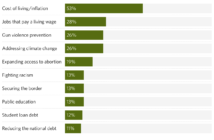Isabel Hinojosa ’25
Staff Writer
Photo courtesy of Annie Spratt via Unsplashed
Teenagers all around the world are choosing TikTok as their social media platform of favor. TikTok has a wide array of content on the app but coming up on top as the genre of choice is food-tok. Trends from influencers, advertisers, and everyday people whose recipes went viral are influencing what viewers put in their bodies.
Sara Lopez ’25, a first-year at Lake Forest College, can attest to the impact watching food videos on TikTok has had on her. “Food videos show up on my for you page very often, way too often,” she said in an interview. “I’ve tried lots of different things. I tried the pasta with feta cheese and tomatoes, I’ve made pasta salads, and I’ve tried different desserts like the cookie brownie.” This is a very common story among college students, especially due to early quarantine, when trying new foods and recipes was something fun to do inside your house with siblings.
However, it is not just fun recipes that are broadcast to the 1 billion users on TikTok as of September 27, 2021, according to TikTok. Influencers post “What I eat in a day” videos displaying all the different meals and snacks they eat throughout the day. To get these videos noticed, influencers use #Whatieatinaday, which has 9.3 billion views as of November 2021. When asked her opinion on these types of videos, Lopez said, “It depends on which ones, Lexi Hidalgo eats a lot and encourages people to eat a lot and fill your body with what you need, but then there’s girls who only eat a salad and a granola bar and those are very discouraging.” Along with these types of videos, some influencers also share videos about their diets to attain a specific kind of body. In regards to these types of videos, Lopez has had firsthand experience. “I’ve tried fasting, which I saw on TikTok. I think it helped me. It was eating dinner at 6 and then not eating till 12 the next day. My family was not on the same schedule, so I stopped,” she said. Lopez is not alone in experimenting with these different types of diets such as fasting, as it has become a big trend on college campuses, specifically among teenage girls.
Nutritionist at Lake Forest College, Kathy Salinger, has seen these diet trends in effect over her 13 years at the school. When asked about weight-loss diets from TikTok, she responded, “My thoughts are that it is very hard to maintain a diet that can work in the short term but is not sustainable. I advocate a well-rounded diet with all the food groups in moderation rather than going for one particular diet.” Many of these online diets give specific calorie numbers which are not designed for all body types and can be unhealthy for certain people. In regard to daily calorie recommendations, Salinger says, “It is totally dependent on how active they are and what their body mass is. We try not to focus on calories so much as healthy eating.”
New college students are often away from home for the first time and struggle with adjusting to new eating habits. “I recommend balanced food groups, try to eat a protein and a grain with each meal,” she said. “A lot of [the] time students that come in to see me only eat carbohydrates for breakfast and get very hungry soon after. I think everyone should add a protein to sustain themselves. There are extremes in diets on college campuses like junk food or very low calorie. It is ok to have a cheat meal, it’s hard for new college students to adjust to having access to food all of the time.” Salinger’s advice aligns with MyPlate, the U.S. Department of Agriculture’s dietary guidelines for Americans which suggests including fruits, vegetables, grains, protein, and dairy in every meal. Even though mothers usually try to instill this in their children’s minds, making their own food choices as they grow up may cause them to stray from this advice.
Parents have become aware of new food TikTok trends through their children’s newfound interest in cooking and perhaps some obscure items added to the grocery list. Alane Krumbine, mother of two teenage girls in Bay Village, Ohio, has experienced firsthand the effects of FoodTok on her kitchen. “I have very frequently seen my child create meals from TikTok. Keira (sophomore) did some sort of ‘world’s best Mac n Cheese thing’. She also made a rainbow crepe cake, and some sort of honey in a water bottle in a freezer so she could just pull it out and have a taffy kind of thing. When she tried it, she made everything sticky in my freezer.” But once again, we see that the content shared on TikTok food-wise is not all fun and games. On the content her child is viewing, she commented, “I have concerns that she’s getting the wrong messaging. If she clicks on a yummy recipe she might see something that encourages fasting or binging and purging.” Due to the vastness and diversity of content on TikTok, anyone can post anything that can reach just about anyone whether you have a platform or not. This concern is very plausible and has affected many teens in the past few years by creating stress and discomfort around eating and possibly even leading to eating disorders.
As with anything else we see on the Internet, people will learn that you cannot trust everything on the Internet. There are two sides to this coin of FoodTok, that can be a fun cooking activity or a dark spiral of eating habits. As one of the most common pieces of nutritional advice says: everything in moderation.

